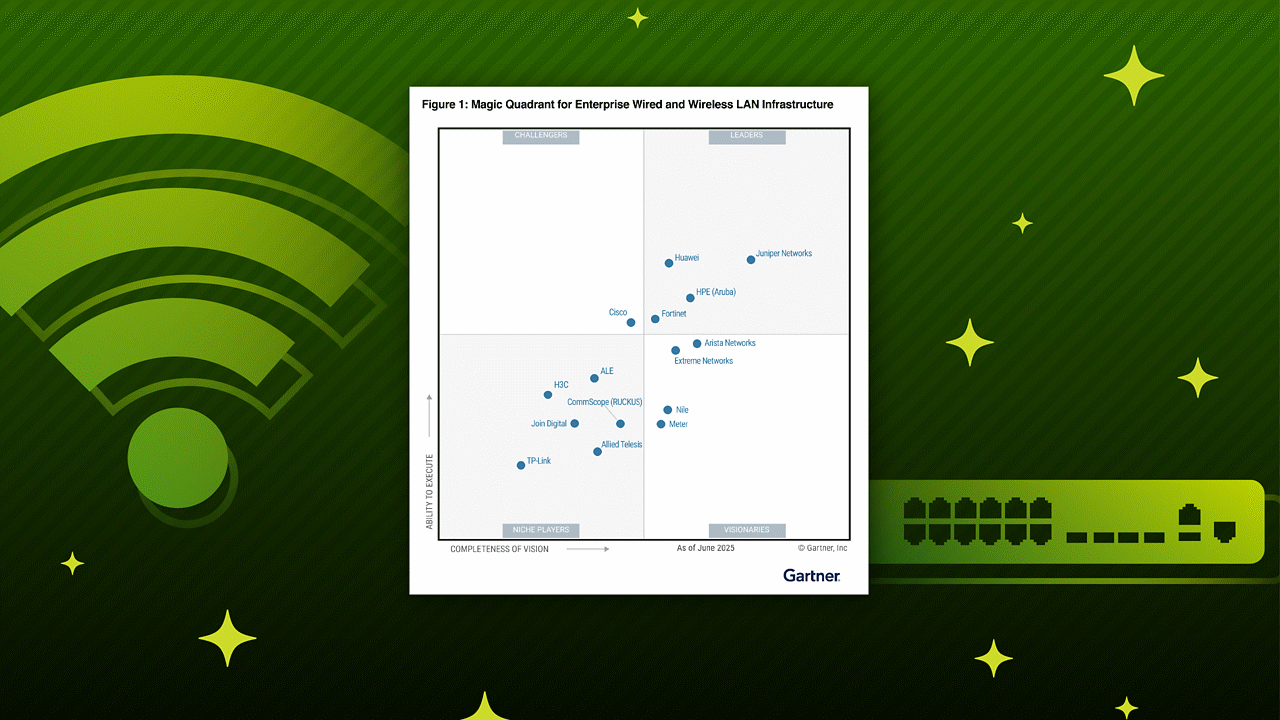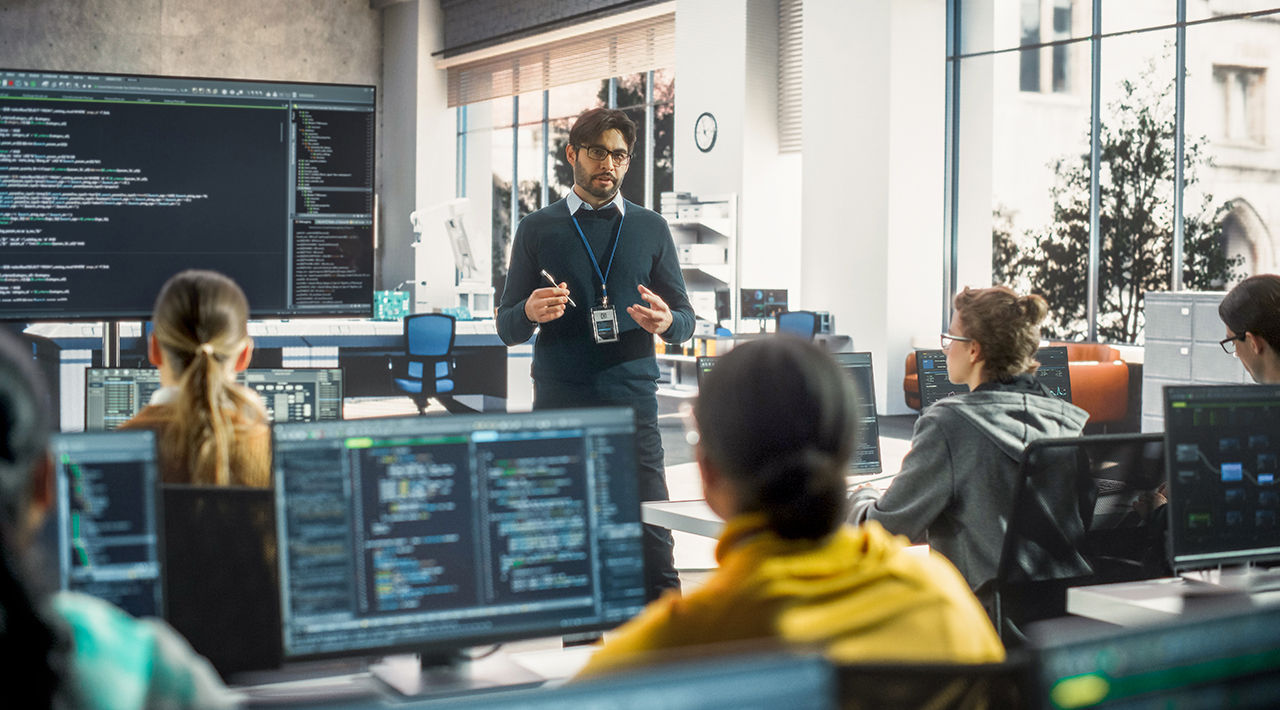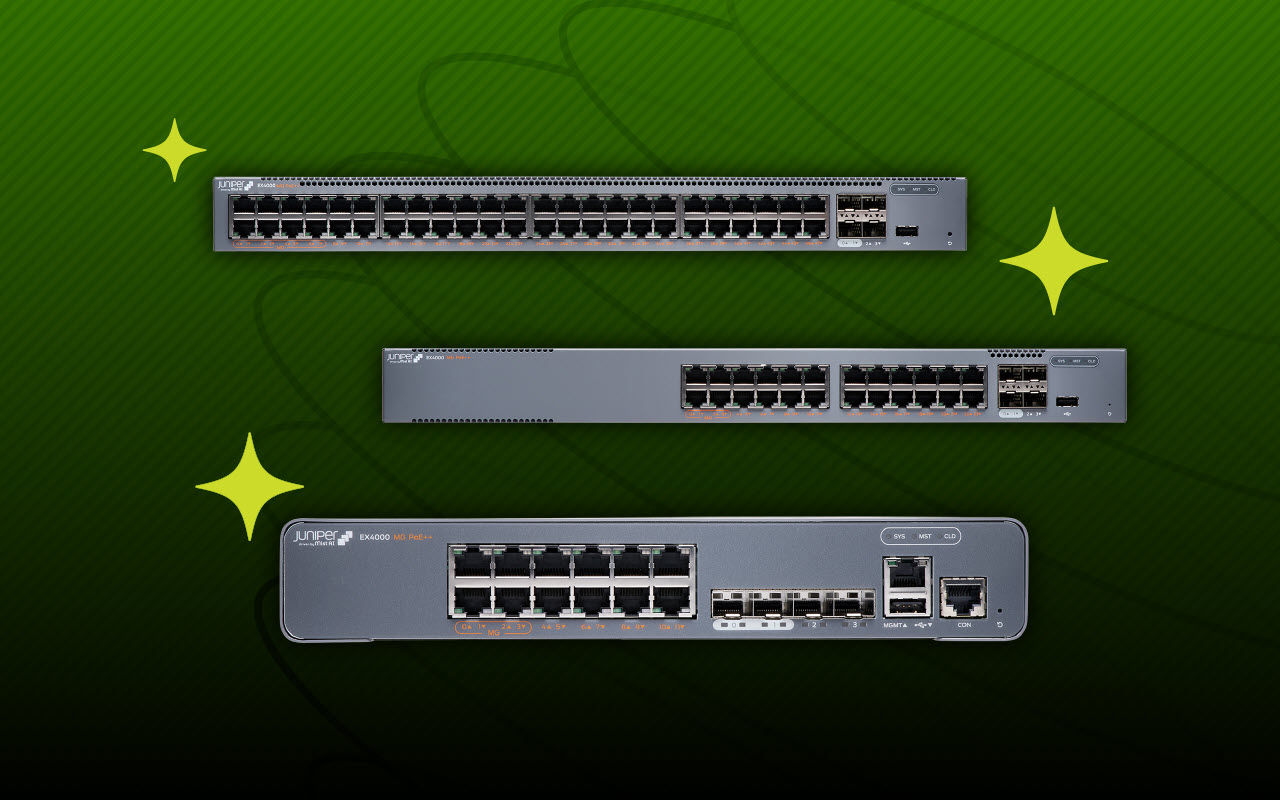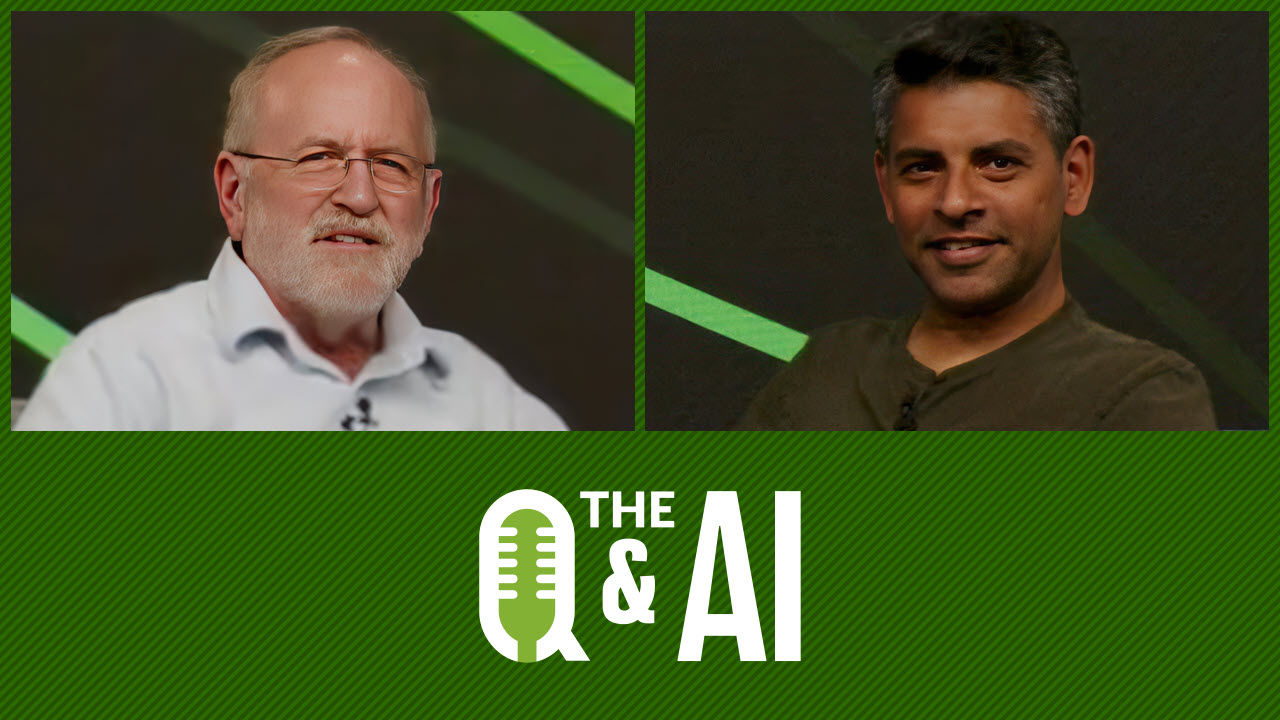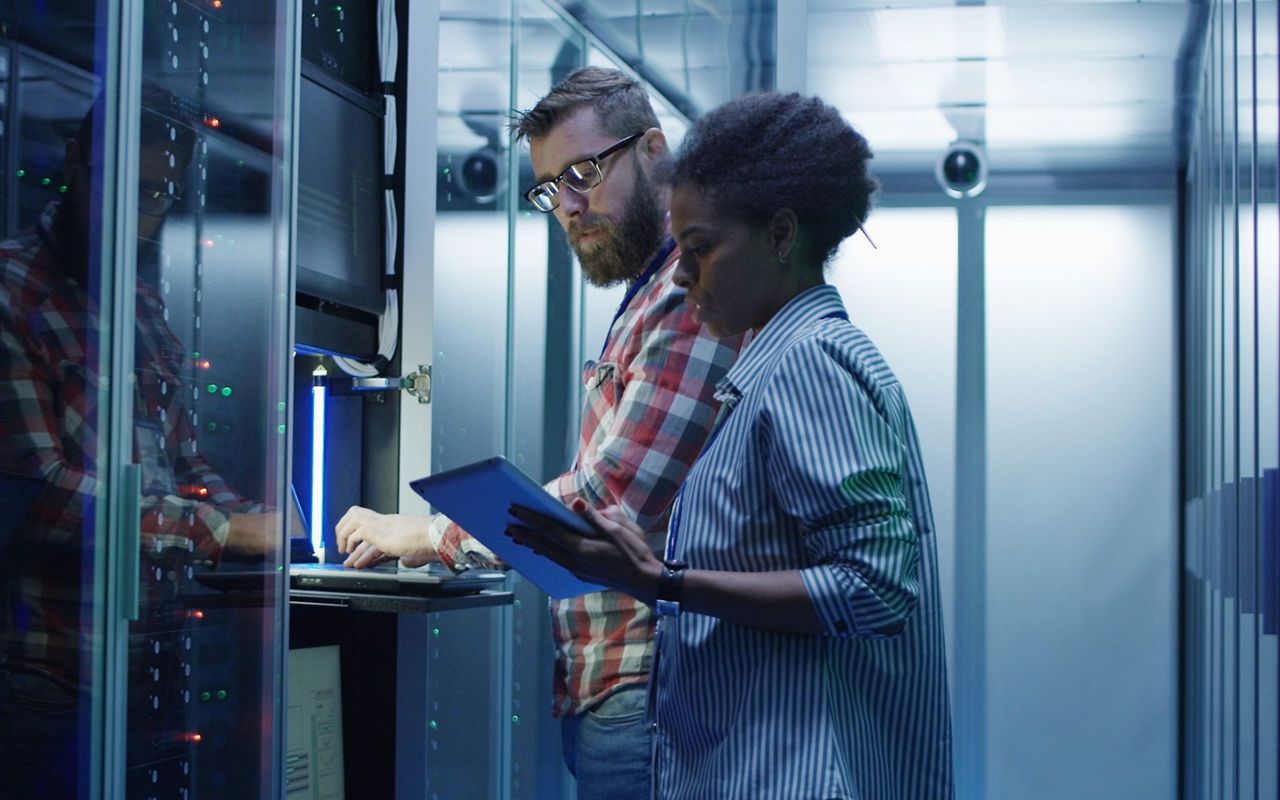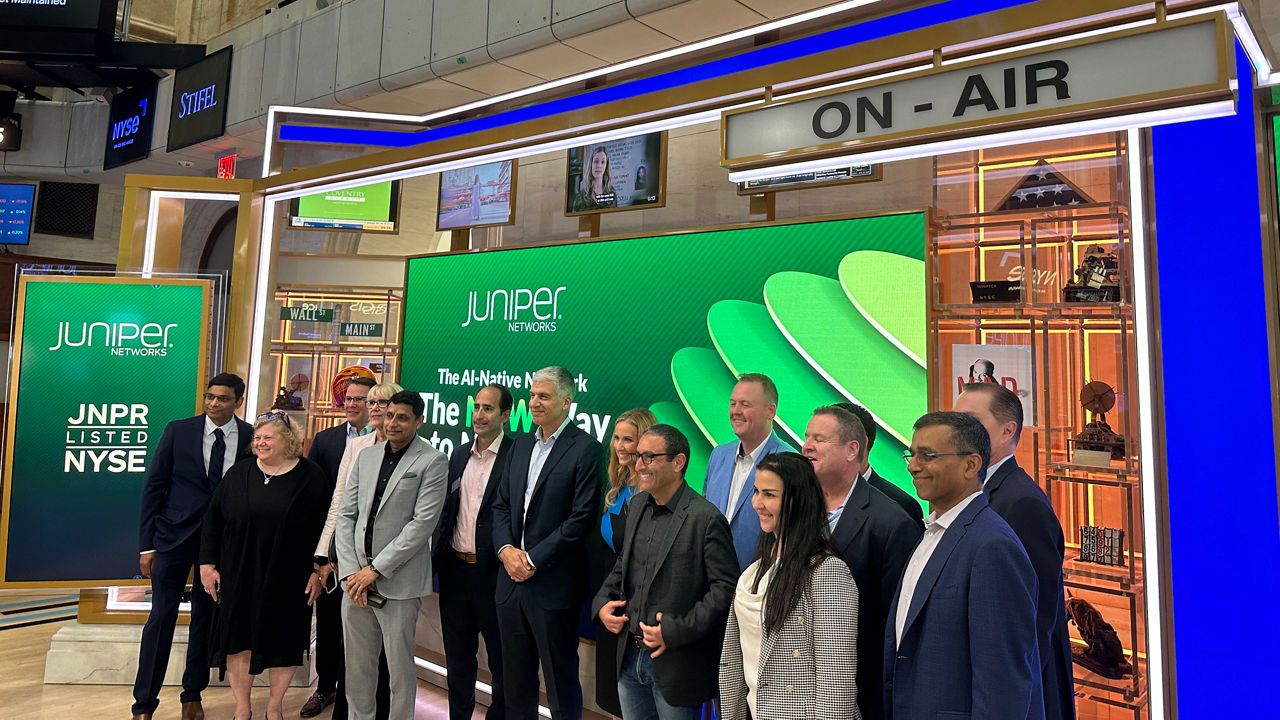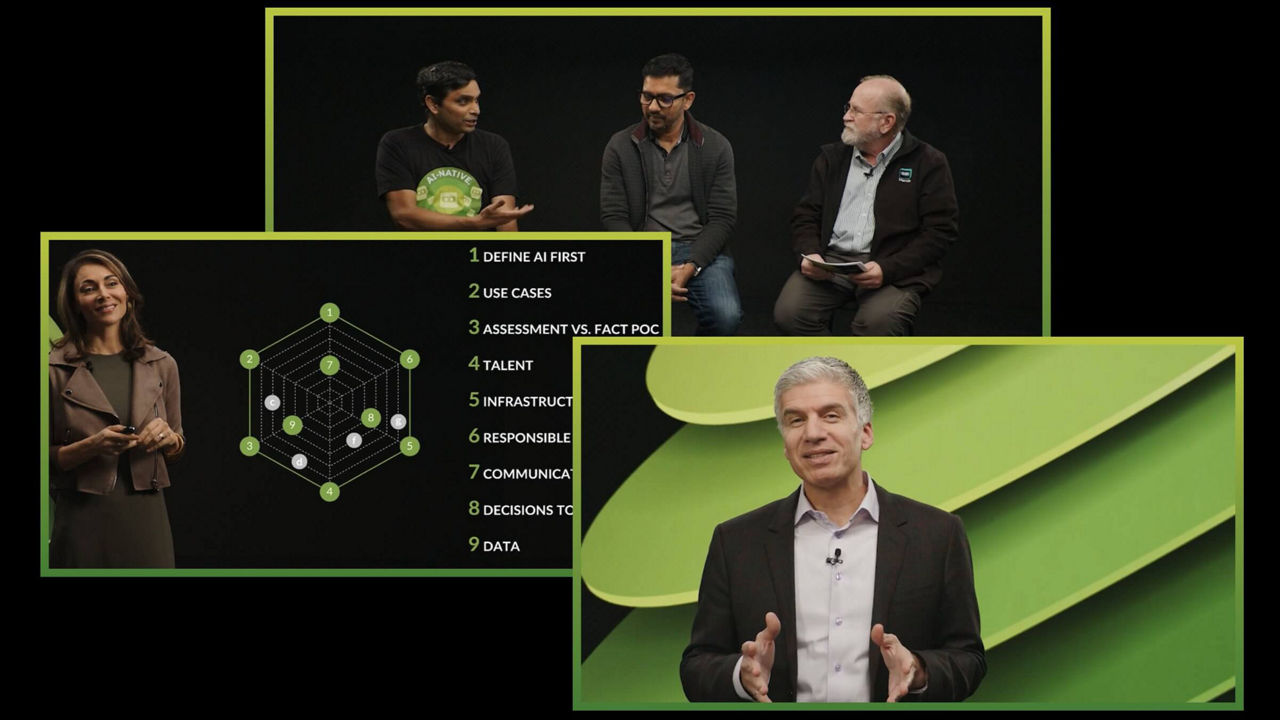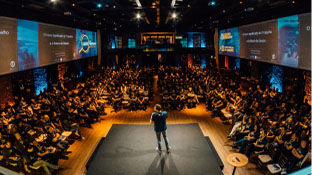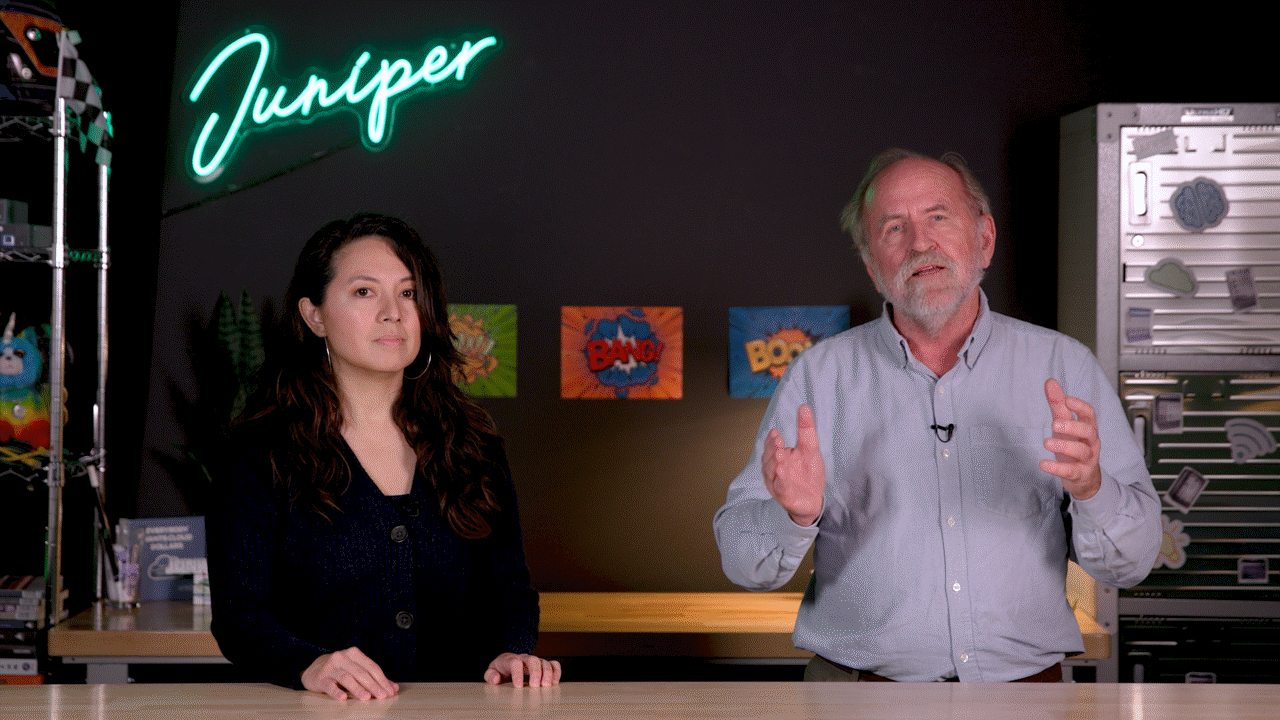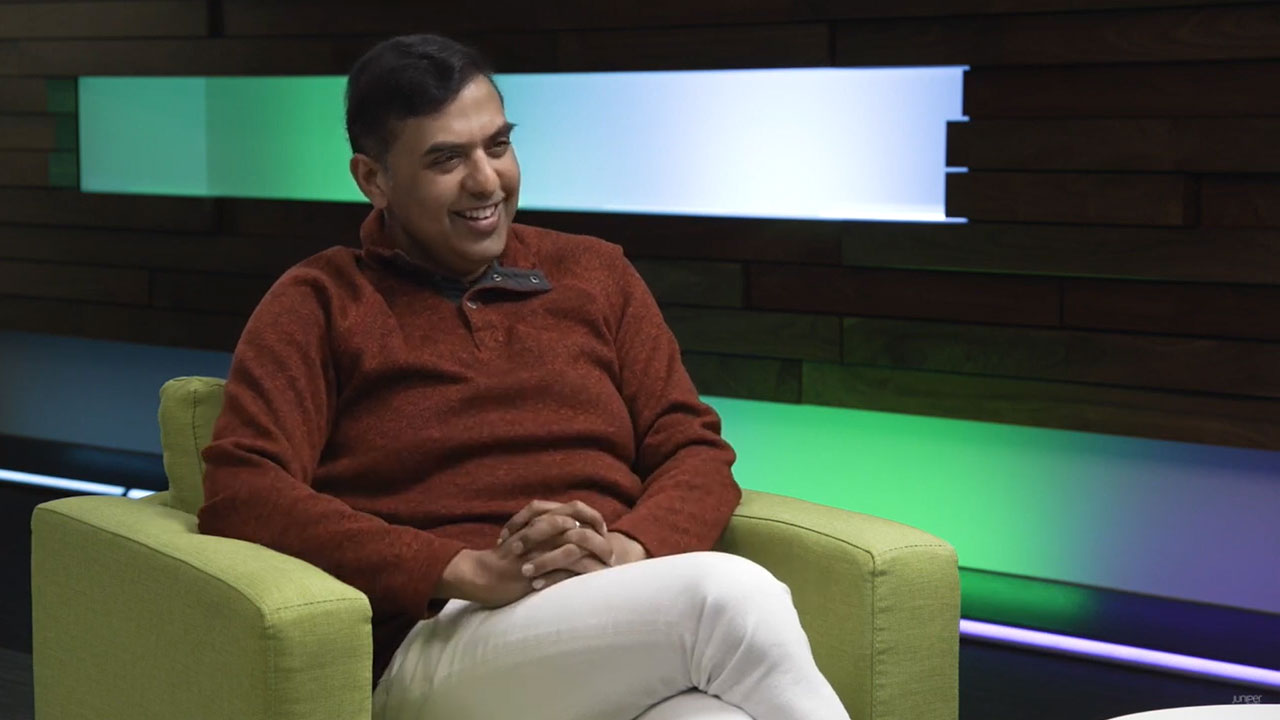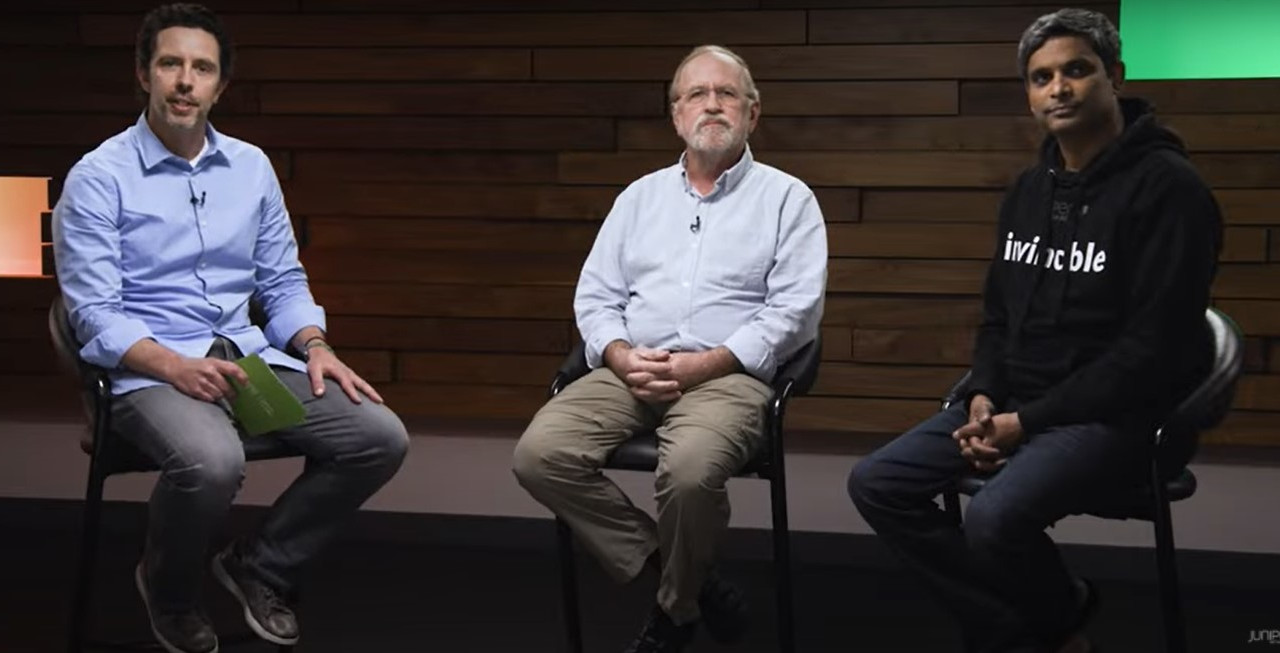A Conversation with Juniper & Mike Krack, Aston Martin Aramco Cognizant F1® Team Principal


How technology + performance = success in Formula One
Winning in Formula One is all about bringing together the best efforts of all partners. Juniper’s Darrin Iatrou sat down with Mike Krack, Principal of the Aston Martin F1® Team, to discuss how data and technology can be leveraged to produce a high-performance team, how to get high performers to keep going when they hit a wall, and how his team gets the most out of their driver, Sebastian Vettel.
You’ll learn
How artificial intelligence (AI) and machine learning play a huge part in Formula One
How much difference the driver makes to the success of a race car
How budget caps affect the team’s ability to innovate and how that is balanced with operational challenges
Who is this for?
Host

Guest speakers
Transcript
0:04 So everybody, welcome.
0:05 My name is Bruce Bennie on the area of vice president of Juniper Networks.
0:08 And we have a Juniper and the Aston Martin Aramco Cognizant Formula One team.
0:13 I want to welcome you to tonight's event.
0:15 So Juniper believes that success is built on teamwork and strong partnerships
0:20 Winning in Formula
0:20 One is all about bringing together the best efforts of all of the partners.
0:24 And we're incredibly proud to be a major partner of the mountain Formula
0:27 One team.
0:33 You know,
0:33 what's it like leading a high performance team
0:36 at an organization that has technical technology at its core?
0:41 Yeah, and thank you very much for having me, for giving me the possibility.
0:45 Yes. This you have obviously
0:49 performance driven individuals that they all have the same goal.
0:53 I mean, race teams these days,
0:55 we have always these discussions about safety,
0:58 operational excellence, excellence, not making mistakes at the racetrack.
1:02 And the race teams these days, they take these boxes.
1:05 So it's all about car performance.
1:08 Who makes the fastest car?
1:10 And to have this performance culture in there is one thing.
1:14 And then to keep going with, even if you have maybe if
1:20 if you are not not leading or if you have not won the last race
1:24 to keep the motivation up because the people are very motivated.
1:28 But we must not forget they are human beings and people. So
1:32 sometimes it's really important to to communicate,
1:35 to communicate why why we are in the situation where we are.
1:40 And you realize very quickly that
1:43 and this all of these individuals are very data
1:47 driven, very, very technology driven,
1:50 but they are human beings.
1:53 This we must not forget.
1:54 So I think that is 11 important part of my role to to not forget that part.
1:59 So on one hand, to promote all kind of technological innovation,
2:04 but not to forget that they are teams with human beings,
2:08 with all their problems that every one of us is having.
2:11 So, yeah, that's that's part of the role.
2:14 How artificial intelligence and machine learning plays a huge part in the Formula
2:20 One sport, because I imagine it is in just about everything that you do.
2:24 Yeah. I mean,
2:26 it started on a smaller scale, let's say.
2:28 And I started as a data engineer, by the way.
2:32 Yeah.
2:32 So data driven, you know, we
2:35 we had a situation where it comes from, a situation where you get
2:40 more and more and more and more and more information or more data.
2:43 And at one point you need to find ways of structuring
2:46 or getting hold of this data, what you need without manual process.
2:51 So I think this is where basically it's starting more and more
2:55 where you try to go for routines for programing.
2:59 And it has evolved more and more into data mining or algorithms
3:04 that help you get the information out that you want to have or combine information
3:08 that the human brain might not even be able to combine. So
3:13 there is there is some some examples we have
3:15 and some are relatively simple like
3:19 we have.
3:21 We try to save weight on the car.
3:23 So we do not want to create to to take census yet.
3:25 So some some census data, they have like a substantial weight
3:30 like half kilo a kilo,
3:33 which we do not want to carry over a distance.
3:36 So we thought about how can we is there a possibility to rebuild
3:40 the signal of the sensor with the with the machine learning algorithm?
3:46 Feeding data in?
3:47 And then this the algorithm can predict where
3:51 can predict the signal from taking other signals
3:54 that that you have to leave in the car. So
3:57 that is one example where for example, where
4:00 on on Sunday the sensor will not be in the car,
4:03 but we will have the data that comes from the algorithm.
4:06 Oh, yeah, that's pretty good.
4:07 So that's that's 11 isolated use case.
4:11 I would say we have many, many routines
4:14 running to to very often
4:18 you have the example of video data combined with structured data, with
4:22 data coming from the wind tunnel
4:24 and it is about how do we combine it and get information all that we want.
4:29 And then also let let you do the job.
4:32 Yeah. Somehow, yeah.
4:33 Or at least the jobs that are too time consuming for the human brain to
4:37 to conduct or where one brain is not, not, not good enough.
4:42 How much difference does the driver make to a race car?
4:45 And while we were getting acquainted out there, I sort of said, well,
4:49 how would you weight the car
4:52 versus the driver versus the pit crew
4:57 versus the team principle on race.
5:00 It's all about the team
5:04 no, it's not all about the team principle.
5:08 Yeah.
5:08 In Formula One, because everybody does his own car,
5:12 so you cannot buy a car from someone else
5:15 or there's not ten different not not ten the same.
5:19 So car performance is dominant there.
5:22 So to put the percentage is now quite difficult. But
5:26 I think Sebastian is the best example. Yep.
5:29 He won four world championships in, in the pool
5:33 and he struggled last year with our car because the car was not performing enough.
5:37 So you have and I think if we give him a car that can win, he will.
5:42 Yeah, he will win.
5:43 So I think the large percentage is the car
5:47 and then it's certainly the drivers next to say
5:52 percentage is difficult, but for sure more than 50% of the car 50% of the cars.
5:57 Yeah. Yeah.
5:59 And then you have seen you go to last year in the championship with Max Estaban
6:02 and his teammate Luis Hammonds and the teammates,
6:06 you see what the difference the driver can make.
6:07 Yes. Yeah.
6:08 If, if, if, if the car is at its peak and the drivers can add to it.
6:13 Yeah. Yeah.
6:14 And then obviously the crew, the pit stop the strategy guys.
6:17 We should not forget and they make the rest.
6:20 Yeah. So if we see
6:23 60, 30, ten, then at that 60. 310.
6:26 Are we then.
6:27 Get close enough,
6:28 you know,
6:28 think about and think, well how am I going to get the best out of Sebastian?
6:32 Yeah.
6:32 I mean the most important first of all is to have the trust between the two
6:36 and not only between the two of us,
6:37 but also between the team and the driver and the driver team.
6:40 And he's a great guy
6:43 and he's obviously getting got older.
6:46 Yeah, me too.
6:48 And the conversations are a little bit different than they used to be
6:52 because we all have families now and then and stuff like that.
6:55 And we had also we were less in touch in the period
6:58 in between when we did not work together when he won these world titles. And
7:03 so, yeah, the conversations are
7:08 more multifold.
7:09 You have you we speak about family we speak about private life as we speak
7:13 also.
7:14 And here is one of the important bits of Sebastian with his experience
7:18 and and what he has learned over all these years.
7:22 He's not only a driver for us, but he's someone that needs to help
7:26 us develop the team because
7:30 we are on the path.
7:31 Yeah, we have a plan
7:33 for the next years, and it is important that we have key people like him
7:37 who can be a motivating factor
7:40 and also help us steer the ship in the right direction
7:42 because he sees also from another perspective, from the driver perspective.
7:46 So from that point of view,
7:49 the series discussions go along with what development direction have we taken.
7:54 And I think it's very, very important for a person
7:58 like Sebastian who is now close to 35 years old,
8:02 very intelligent person
8:05 to understand where we are moving and hear what he has to say about it.
8:09 Because he has to believe in this direction as well.
8:11 Otherwise, we are not we are not in another line.
8:14 So a lot of conversations go in that direction.
8:17 You know, where are we heading to
8:20 and how do we organize ourselves?
8:22 These discussions that you don't have with every driver,
8:25 how you organize, how we structured your organization, you know,
8:29 but I rate I rate his opinion very high, and that's why
8:32 we have these conversations.
8:33 So how do you get high performers to keep going when they hit the wall
8:38 and we spoke about this bit earlier, I like Schumacher crashing
8:41 pretty, pretty heavily.
8:44 How do you get them back up?
8:45 How do you bring them back up for the next race?
8:48 Yeah, I mean, race drivers, they have
8:50 they have a lot of internal motivation already.
8:52 You don't have to really motivate them to race. But
8:56 I think it's
8:56 very important that and we had it with Kofi also now with with Sebastian,
9:00 he they come back and they had to have the hit or
9:05 even if it is a bad performance or whatever,
9:06 I think it's very important that you speak to them
9:10 and also show the appreciation or how important it is.
9:14 I mean, I spoke spoke to Sebastian today and I gave him the example
9:17 that we are all super happy that he's back.
9:21 And I think he needs that as well. Yes.
9:24 To to to get a bit more out
9:25 because I said it initially the trust between the team and the driver,
9:28 if the driver feels trusted, I think there's maybe a little two
9:31 to three tenths extra that he has that maybe he doesn't have.
9:36 If he doesn't trust so again, it comes down to the human relationship
9:40 between between the driver and the team or the people that deal with the.
9:45 Drivers
9:47 how do you see
9:48 budget caps affecting your ability to innovate
9:51 and how do you balance that with operational challenges?
9:55 Yeah, but is CAP is new since the beginning of 2021.
10:00 So we have to basically
10:05 what what I said before when we want to develop the car. No,
10:08 before when you have unlimited resource, you could say, OK,
10:12 I go five parallel path and I try to
10:16 see what is the best.
10:17 Yeah.
10:17 And I leave completely open my development field and I see which returns the best.
10:24 With the budget cap, you have to go much more into value for money and identify
10:29 to give you an example is downforce
10:32 giving me more lap time or weight reduction?
10:34 Give more power because I will not be able anymore to do everything so
10:41 now obviously
10:42 the budget cap has a value this year and it has it will reduce
10:46 the do what you must, what you must spend will reduce more and more over the years.
10:50 So I think it's very important that you have a very good overview
10:53 of your cost structure.
10:55 Where do I spend, what does it cost me to reduce rate
10:58 and what is the basically the lap time per
11:00 dollar spent that I will get from it and to establish
11:05 these sensitivities is very, very time consuming and but very important.
11:09 So before you had for example,
11:13 technicians in the room,
11:15 technicians and engineers only and drivers.
11:18 Now the finance guys come as well.
11:19 Of course,
11:21 you have to say we certainly have this.
11:23 I'm not allowed now, but this is this is the way we we have to tackle it
11:27 because the cost engineering is very, very important so that you
11:31 you have a very good overview of what gives you
11:33 the most return for the money you spent. OK?
11:37 And yet to be able to still innovate is is just the next step.
11:42 Yeah.
11:42 When you when you
11:44 when you get to a direction where you think it's promising
11:47 and it gives you a lot of lap time or a lot of performance,
11:51 then you have you just have to say I focus on that
11:55 and I say no to the others because to say no is a difficult part, isn't it?
11:59 To say yes?
12:00 Yes, we spend and we do everything we have.
12:02 The idea we have we try to put into reality is easier.
12:05 If you have.
12:06 If you got the money, yes, you could give you Mercedes.
12:08 Yes, it's OK.
12:09 Well, you've certainly indeed yourself to me.
12:11 I'm sure you've enjoyed yourself, too.
12:12 Everybody in the room
12:14 will you'll have 50 or more supporters of Aston Martin this weekend.
12:19 We wish you well and
12:21 sincere.
12:22 Thank you for spending some time with us. Thank you very much.
12:24 We'll do our best. Thank you. I don't think.




